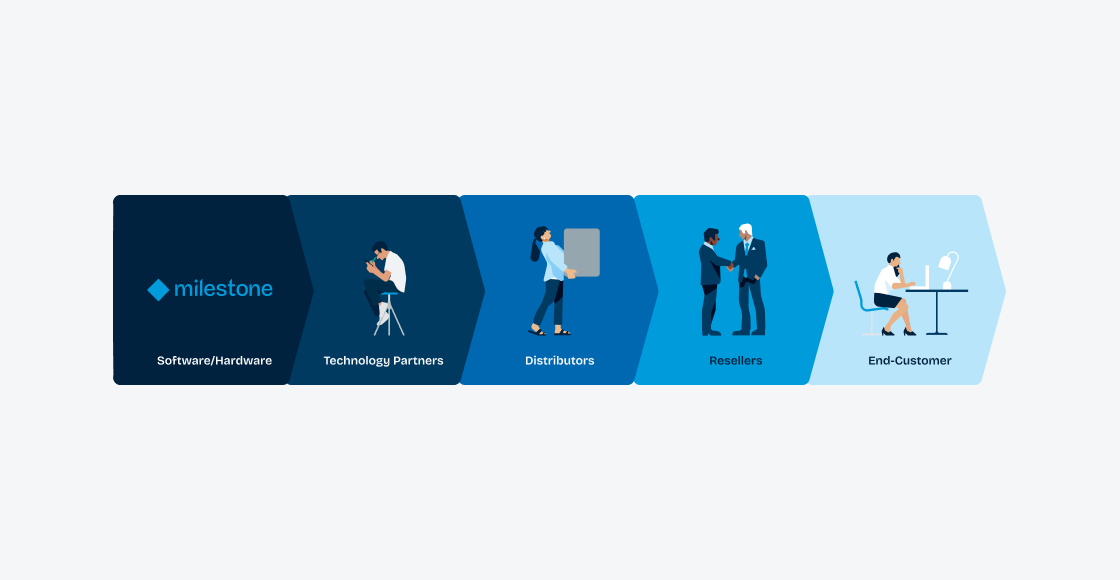Video cameras have been a mainstay of the security industry for many years - ever since they were first used during World War 2. Throughout the decades, video technology has evolved far beyond the basic functionality that many people associate with camera networks.
Video cameras have been a mainstay of the security industry for many years – since they were first used by the German army during World War 2 to record secret V2 rocket testing. The United States followed suit in 1949 with a CCTV project called Vericon, then in the early 1950s, video tape recorders were coupled with small TV cameras for the first time, and these became commercially available in 1956, giving rise to the CCTV industry. Cameras became commonplace across retail centres, airports, stadiums, and other public spaces.
By the early 1990s, the technology had evolved to the point of digital multiplexing, which allowed for several cameras to record at the same time. This period also saw the development of motion-only and time-lapse recording, which enhanced the functionality of a solution.
In 1996, the first IP camera came into being. The IP camera was able to transmit information, video and images across computer networks, a functionality that led to the decline of the more basic analogue CCTV cameras.
The rise of the IP camera also inspired a strong rate of development in the video market, with higher-definition cameras including enhanced features such as wide dynamic range (WDR) and pan/tilt/zoom (PTZ).
Video technology has evolved far beyond the basic functionality that many people associate with camera networks. Video analytics are being used to gain deep insights into patterns of behaviour, situational awareness for commercial buildings and other public spaces, as well as advanced health and safety solutions. It is being used across industries ranging from education, hospitality, healthcare, and even smart cities.
This has led to a subsequent spike in investment across the region, with a forecast for higher growth over the next few years. According to recent statistics from Markets and Markets, APAC is likely to grow at the highest CAGR for the global video surveillance industry from 2020–2025. The region is expected to continue to hold the largest market size and to be the fastest-growing region in the video surveillance market owing to heavy investments in smart city projects.
This points to greater use of advanced video elements in technical deployments and greater scope for smart integrations. The potential for video deployments is vast – limited only by the imagination and drive of vendors, integrators, and developers.
For example, video analytics are currently being used to help organisations safely return to a corporate environment following lockdown conditions, by providing real-time statistics on the number of people in specific areas, social distancing, and remote temperature observations.
A system is in development which, when complete, can monitor swimmers at a beach and sound an alert if an individual ‘goes missing’. Focusing a camera between the ‘safe to swim’ flags, a biometric analysis solution can count the number of people in the water, and instantly alert authorities should someone not return to the surface after a wave passes.
Mining and resources play a major part in Australia’s economy, and the industry boasts some of the most advanced hardware, technology, and infrastructure in the world. However, certain roles in the industry are still inherently dangerous.
Video technologies are being used and constantly developed to mitigate risk in hazardous situations. For example, sensors attached to advanced cameras, with analytics run through a video management software (VMS) platform can detect levels of particulate matter in an enclosed space such as a mine shaft, and alert administrators should those levels become hazardous.
Perth Zoo launched a live stream of their giraffe enclosure in 2020, allowing online visitors to watch the giraffes – including a new-born – in their enclosure 24 hours a day. This proved particularly popular during lockdowns, with animal lovers remaining engaged with the zoo despite not being able to visit in person.
Another win for our four-legged friends has seen the Victorian Guide Dogs Association adopt heat-sensing technology and a network of cameras which are helping to keep expecting mothers safe in the whelping room. Rather than opening the premises to check on pregnant canines at all hours of the night and day, infrared cameras are set up to detect body heat and movement in the whelping room, allowing staff members to remain vigilant from a remote location.
The vast potential for video deployments like these is only limited by the imagination of individuals and the ability of developers to see where improvements might be made, and with the right partners, these visions can be brought to life.
Country Manager for South Pacific


